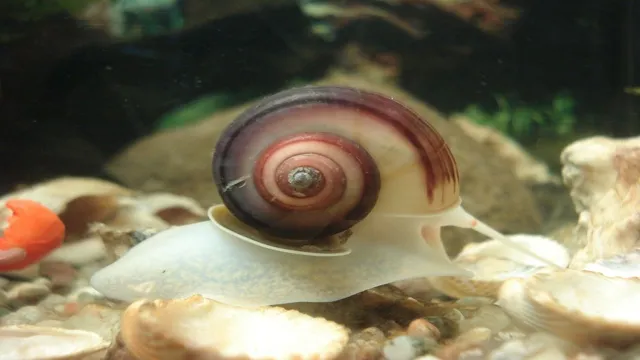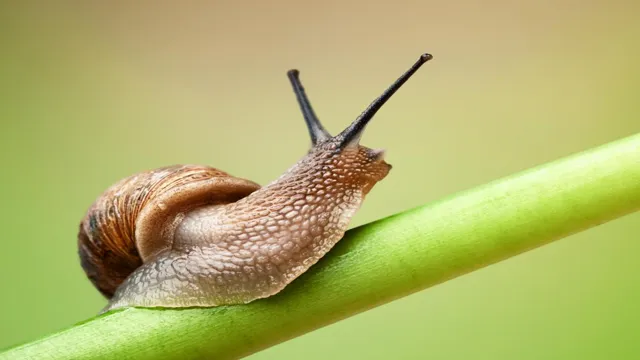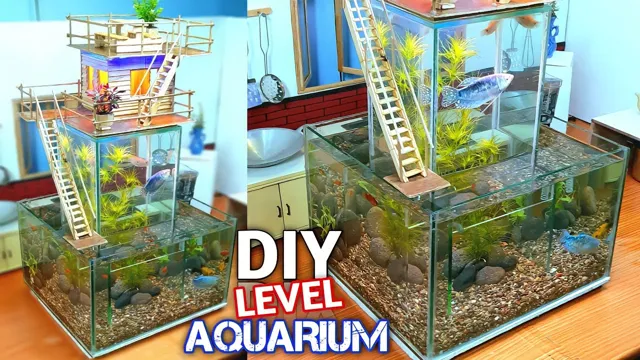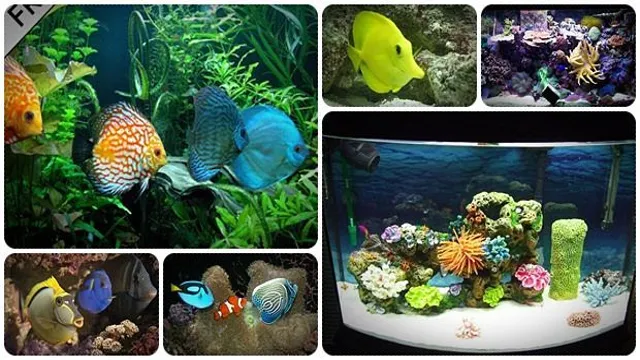How to Kill Snails in Planted Aquarium: A Complete Guide for Effective Management.

If you’re an aquarium enthusiast, you probably know the stress that comes with dealing with unwanted creatures in your planted aquarium. Snails in particular can be a nuisance, feeding on your plants and leaving behind unsightly trails. While they may seem harmless, a heavy infestation can quickly spiral out of control, leaving you with a tank overrun with slimy nuisances.
So, how do you go about killing snails in a planted aquarium without harming your aquatic plants, fish, or other desirable inhabitants? In this blog, we’ll explore some effective methods to eradicate snails from your planted aquarium, while keeping the rest of your aquatic life healthy and happy.
Understanding the Problem
If you’re an aquarium enthusiast, you know how frustrating it can be to deal with snails in your planted tank. While they may seem harmless, these little creatures can quickly overrun your tank if not dealt with properly. The first step in getting rid of snails in your aquarium is understanding the problem.
Snails often hitchhike into tanks on plants, decorations and even fish. They can quickly reproduce, laying eggs in bunches that hatch within a few weeks. There are several methods for getting rid of snails in your tank, such as using chemical treatments or manual removal.
However, it’s important to keep in mind that some of these methods can harm your plants or other inhabitants. So before you start treating your tank, research and choose a method that will work best for your unique situation. By understanding the problem and choosing a safe and effective solution, you can successfully eliminate snails and keep your planted aquarium healthy and thriving.
The Role of Snails in an Aquarium
Snails can play a crucial role in an aquarium. While some people may see snails as a nuisance, they can actually benefit the tank ecosystem in several ways. Snails can help clean the tank by eating algae and other debris, which can reduce the need for chemical cleaners.
Additionally, snails provide a food source for some fish species and can help break down waste in the tank. However, it is important to monitor the snail population in the tank to prevent overpopulation. Overpopulated snail communities can lead to excessive waste and problems with water quality.
Therefore, it is recommended to introduce a controlled number of snails into the aquarium and regularly monitor their numbers to ensure a healthy balance. Remember, snails are not just simple pests but can be valuable additions to an aquarium ecosystem.

The Risks of Chemical Solutions
When it comes to cleaning solutions, it’s important to understand the potential risks involved with chemical products. These options may seem like an easy fix, but they can come with serious consequences. Chemical cleaners can release harmful fumes into the air, potentially leading to respiratory issues and other health concerns.
In addition, these products can be toxic to other living beings, such as pets or young children, if ingested. One of the main risks associated with chemical solutions is the damage they can cause to surfaces. Harsh chemicals can strip away finishes and cause discoloration, leaving you with costly repairs.
It’s important to weigh the benefits of the quick and easy option against the potential risks and consequences. When possible, opting for natural or eco-friendly alternatives can be a safer and more sustainable choice. By understanding the risks involved, we can make informed decisions about the products we use and their impact on our health and the environment.
Natural Methods for Killing Snails
If you have a planted aquarium, you may have encountered snails before. While they can be beneficial in some ways, they can quickly become a nuisance if their population grows out of control. Thankfully, there are natural methods to help control and kill snails in your aquarium.
One effective way is to use snail traps. These traps can be made using a small jar filled with a piece of lettuce at the bottom. The snails are attracted to the lettuce and will crawl inside the jar, allowing you to remove them from your tank.
Another method is to add some assassin snails to your tank. These snails prey on other snails and can help to control their population. Additionally, you can manually remove snails from your aquarium by using a net to scoop them out.
As a last resort, you can also add a small amount of copper to your tank, which can be toxic to snails but be cautious as it can also harm other aquatic animals. Overall, while snails can be annoying, there are many natural methods to help combat them in your planted aquarium.
Manual Removal
Manual removal is one of the natural methods for killing snails. If you’re looking for a humane way of getting rid of snails in your garden or yard, manual removal is an effective option to consider. All you need is a pair of gloves and a container to collect the snails.
Start by searching for snails in areas where they’re commonly found, such as under foliage or near damp soil. Once you’ve located them, pick them up gently by the shell and place them in your container. Be sure to dispose of them far away from your garden to avoid them returning.
This method is not only effective but a great way to connect with nature and get some fresh air. Try it out and see the difference for yourself!
Introducing Natural Predators
If you’re tired of using harmful chemicals to get rid of snails, why not try introducing natural predators to your garden? One effective method is to introduce predatory snails that feed on their smaller cousins. Not only do they help keep the snail population under control, but they also play an important role in the ecosystem by providing food for other animals. Another solution is to attract birds and other animals that feed on snails, such as ducks and hedgehogs.
You can install birdhouses or create a pond to attract these natural predators to your backyard. By using natural methods for killing snails, you’re not only ensuring the health of your garden but also promoting a balanced and sustainable ecosystem.
Using Traps
If you want to get rid of snails in your garden without resorting to harsh chemicals, try using traps. One natural method is to create a beer trap by burying a small container, such as a yogurt cup, in the ground and filling it with beer. Snails are attracted to the yeast in the beer and will climb in, only to drown in the liquid.
Another option is to use a grapefruit half trap. Simply cut a grapefruit in half and scoop out the inside. Place the empty halves in the garden with the cut side facing down.
The snails will be drawn to the moist, dark interior and can be easily removed in the morning. By using natural methods like these, you can control snail populations in your garden without harming the environment.
Preventing Future Infestations
If you’re dealing with a snail infestation in your planted aquarium, knowing how to kill snails is important. However, it’s also essential to prevent future infestations. Start by keeping a close eye on any new plants or aquarium inhabitants you bring home.
Quarantine new plants for a few weeks before adding them to your tank to make sure they’re snail-free. You can also dip new plants in a solution of hydrogen peroxide and water to kill any snails and their eggs. Clean your aquarium regularly, removing any dead plant matter or excess food that could attract snails.
Finally, consider adding a predator like a loach or assassin snail to eat any remaining snails and prevent their numbers from growing out of control. With these preventative measures in place, you’ll be able to keep your planted aquarium free of snail infestations in the long run.
Monitoring and Maintaining Water Quality
Water Quality Monitoring, Infestation Prevention One of the crucial ways to prevent future infestations in our water sources is by monitoring and maintaining the quality of water regularly. With the help of advanced technology, water quality monitoring has become more accessible and efficient. It involves testing the water regularly to identify any changes in the quality, such as the presence of harmful bacteria or chemical pollutants.
Proper monitoring of the water sources is essential not only to prevent future infestations, but also to ensure the safety of the people who rely on that water for drinking and daily use. This can be done through a combination of onsite inspections, laboratory tests, and regular equipment maintenance. By implementing a comprehensive water quality monitoring program, we can take proactive measures to identify and address any potential issues that may arise in the future.
It is important to prioritize water quality monitoring as a crucial step in preventing future infestations and maintaining the overall health of our water resources.
Avoiding Overfeeding
When it comes to preventing future infestations, it’s essential to avoid overfeeding your pets. Overfeeding can lead to excess food being left out, which can attract pests such as rodents and insects. These pests can then bring in even more pests, creating a never-ending cycle.
Additionally, overfeeding can lead to your pets’ waste being more appealing to pests, which can also attract them to your home. To prevent overfeeding, measure out the appropriate amount of food for your pets and avoid leaving any excess food out after they have finished eating. This simple step can go a long way in preventing future infestations and keeping your home pest-free.
So, next time you’re tempted to give your furry friend a little extra treat, think twice and remember the potential consequences of overfeeding.
Conclusion
In conclusion, getting rid of snails in a planted aquarium is a delicate balance between pest control and maintaining the ecosystem. While some may opt for chemical treatments or the use of assassin snails, there are also natural and effective methods such as reducing overfeeding and practicing good maintenance habits. Remember, a snail-free aquarium is a happy aquarium, but always strive for balance and harmony in all aspects of aquatic life.
Happy snail-squashing, my fellow fish enthusiasts!”
FAQs
What are some natural ways to control snails in a planted aquarium?
Some natural ways to control snails in a planted aquarium include adding snail-eating fish or shrimp, reducing feeding frequency, and manually removing visible snails.
What chemicals can be used to kill snails in a planted aquarium?
Some chemicals that can be used to kill snails in a planted aquarium include copper sulfate and potassium permanganate. It is important to follow dosing instructions carefully and remove any dead snails promptly.
Will killing snails harm my aquarium plants?
In general, killing snails should not harm aquarium plants. However, it is important to use chemicals carefully and remove dead snails promptly to avoid any negative effects.
How do I prevent snails from returning to my planted aquarium?
To prevent snails from returning to a planted aquarium, it is important to ensure that new plants are thoroughly cleaned before being added to the tank. Additionally, avoid overfeeding and keeping water conditions stable, as snails are attracted to excess food and poor water quality.
Is it possible to permanently eliminate snails from a planted aquarium?
While it is unlikely to completely eliminate snails from a planted aquarium, consistent management and control measures can greatly reduce their population and impact.
Can snails be harmful to other aquarium inhabitants?
Snails themselves are generally not harmful to other aquarium inhabitants, but their overpopulation can result in excess waste and competition for resources.
What are some non-toxic methods for controlling snails in a planted aquarium?
Non-toxic methods for controlling snails in a planted aquarium include manually removing visible snails, reducing feeding frequency, and adding snail-eating fish or shrimp.






